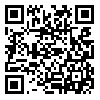Volume 18, Issue 2 (2011)
EIJH 2011, 18(2): 89-115 |
Back to browse issues page
Download citation:
BibTeX | RIS | EndNote | Medlars | ProCite | Reference Manager | RefWorks
Send citation to:



BibTeX | RIS | EndNote | Medlars | ProCite | Reference Manager | RefWorks
Send citation to:
Hojabri Nobari A, Khorsowzadeh A, Mousavi S M, vahdatinasab H. Trade and Cultural Contacts between Northern and Southern Persian Gulf during Parthians and Sasanians: A Study Based on Pottery from Qeshm Island. EIJH 2011; 18 (2) :89-115
URL: http://eijh.modares.ac.ir/article-27-10987-en.html
URL: http://eijh.modares.ac.ir/article-27-10987-en.html
1- tarbiat modares university
Abstract: (6837 Views)
The first season of survey at Qeshm, carried out during the winter of 2006, resulted in the identification of nine sites from the Parthian and Sasanian periods.
The surface pottery from these sites suggests their trade and cultural relations with contemporary sites in the southern Persian Gulf and other areas. For instance, the Parthian and Sasanian glazed types in Qeshm Island are closely related materials found from Khuzestan as well as northern and southern coasts of the Persian Gulf, including ed-Dur, Suhar, Kush, Failaka and Qalat Bahrain.
Parthian painted ware reveals close similarities to monochrome and bichrome painted pottery of southeastern Iran, Oman coasts and the southern Persian Gulf, specifically ed-Dur, Suhar, Kush and Tel-i-Abrak.
The so-called Indian Red Polished Ware is the other diagnostic type widespread in the northern and southern coasts of the Persian Gulf from the middle Parthian up to the early Islamic period. The material was being widely produced in the Indian region (Gujarat) and Indus, and exported to different places around the Persian Gulf.
The Coarse Black Ware (ceramic noir epaise) with decorative raised bands recorded in Qeshm compares with coarse-black material from the southern Persian Gulf, also occurring at sites such as ed-Dur and Abu Dhabi Islands.
Plain, common Parthian and Sasanian pottery from Qeshm shows parallels with known materials of this period in the northern and southern Persian Gulf.
Received: 2011/09/3 | Accepted: 2011/08/16 | Published: 2011/09/3
| Rights and permissions | |
 |
This work is licensed under a Creative Commons Attribution-NonCommercial 4.0 International License. |







